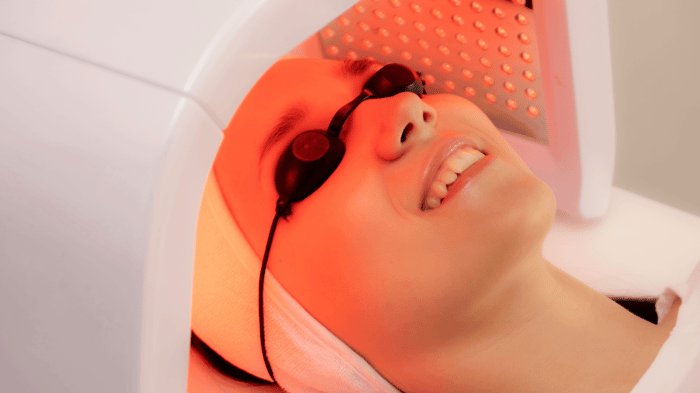
Due to the outbreak of Covid-19 worldwide, this year has been a whirlwind of new health safety practices, and one of the most recommended is wearing face masks. When worn to cover the mouth and nose they hinder the spread of respiratory droplets that can contain viral particles, protecting both the wearer and the people around them from possible infection.
The CDC is currently recommending that anyone over the age of 2 wear a face covering while in public settings, especially when social distancing is difficult. Across the country adults and children are following the advice to mask up and are, in some cases, wearing masks for many hours per day while at work or school.
However, while masks protect against viruses they can also cause new problems. Staph, MRSA, “maskne”, “mask mouth”, allergic reactions, bacterial bronchitis, lung edema and mask litter are all fears relating to the new masking practices. Lately I’ve come across scary images and stories on social media and first-hand accounts from people who have been negatively affected by mask-wearing--in other words, these mask fears are taking on a life of their own.
Most experts say the risks of masks are small and the benefits are clear, but we always like to be smart about best practices. What are the biggest concerns with long-duration mask-wearing and how can I practice smart masking?
What Are the Risks?
Maskne
Dermatologists across the country are confirming the reality of acne caused or worsened by the wearing of a facial covering over the mouth and nose. “Acne mechanica” is a subtype of acne caused by friction, pressure, stretching, and rubbing of the mask materials on the skin. Doctors are comparing maskne to the acne seen in athletes due to wearing helmets and equipment that trap sweat, dead skin cells, and bacteria next to the skin. (source)
Mask Mouth
Mouth sores, inflamed gums, decaying teeth and sour breath can all result from wearing masks for long periods. Bacteria trapped in the moist mask can grow and may be breathed back into the mouth to make a comfy home. This yucky possibility is made worse by the “dry mouth” that is seen in many mask-wearers. Saliva is the natural cleaner and bactericide for the mouth and when it’s in short supply microbes can run amok. (source)
Infections
Serious skin issues such as a Staph infection caused by wearing a mask are extremely rare, but could be a possibility. Any increase in the risk of a serious facial staph infection is due to people touching their faces more to adjust their masks and take them off and on: if nasty bacteria is introduced into an open sore on your face an infection can result. (source)
Bacterial Bronchitis and Pneumonia
A friend who is an ER doctor at a local hospital recently told me about an unexpected uptick in cases of bacterial bronchitis and lung infections, much more than would normally be expected at this time of the year. The patients are testing negative for COVID-19 or other viral infection. He and his colleagues believe the infections are related to mask wearing in some cases. When people breathe deeply with a mask on, bacteria that may be present on the mask can potentially be inhaled deep into the lungs. The level of mask hygiene in the general population varies greatly and the use of “dirty” masks is unfortunately common.
There also may be a connection between masks and fluid buildup in the lungs. A bartender at a restaurant we went to last weekend told us his personal story of suddenly developing lung edema and needing to go on medication for the first time in his life. His doctor directly blamed the condition on his long hours wearing a mask and told him to limit his time in a mask as much as possible. He had a mask on during this conversation--since it’s currently required for his job and expected by customers.
Lung effects and infection risks need more study to determine the true amount of risk to the general population.
Allergic Reactions
Some people have had allergic reactions to the materials of their masks. Contact dermatitis can result from your skin being in contact with a material that is irritating or inflammatory. Choose 100% organic cotton or search for a material that does not cause a reaction for you.
Another allergic reaction source can be the detergent used to launder the masks or other laundry additives. Make sure to use hypoallergenic detergent for mask cleaning and no fabric softeners or extra laundry additives. (source)
Tachycardia
There have been reports of some mask-wearers developing tachycardia - overly fast heartbeat. The theory is that people may be breathing more deeply due to the mask limiting supply of oxygen and/or oversupplying exhaled and trapped CO2. This can cause the heart to beat faster to attempt to get more oxygen to locations in the body where it’s needed. For some people this could be an unwelcome strain on their heart (source). This seems to be very rare and experts do not think it is a concern for most people.
Environmental Destruction
Many millions of disposable masks and gloves have been used since the start of the pandemic and this is bad news for the environment. In March the WHO estimated that 89 million additional disposable masks were needed per month in medical settings worldwide. And now that everyone is wearing masks outside of medical settings, the number is soaring higher. (source)
The majority of disposable masks are manufactured from long-lasting plastic materials and can potentially persist in the environment for hundreds of years. The masks cannot be recycled in the normal recycling process since they can get caught up in the machines used there.
They could also be a potential biohazard to recycling workers, since Coronavirus can survive for days on surfaces in some conditions. Since plastic waste can devastate ecosystems, it’s a real problem that we should be paying more attention to.
Smart Masking Rules
As scary as these possibilities are, they can be avoided through responsible mask use.
- Choose the right material and proper fit. 100% cotton is best - organic if you can get it. Make sure masks don’t rub or chafe on your skin due to improper fit.
- Wash masks carefully & daily. Use hypoallergenic detergent with no dyes or perfumes. Skip the fabric softeners. Never rewear without washing!
- Minimize wearing time. Try to find ways to minimize your time in a mask and take frequent mask breaks - outside in fresh air is best.
- Wash your hands and face. Before touching your face or your mask make sure your hands are clean. Wash your face frequently and moisturize to make sure your skin doesn't dry out. Exfoliating is helpful too. Limit facial products/makeup.
- Brush and floss. Protect your oral health by brushing and flossing more often and don’t miss dental visits.
- Listen to your body. If you feel like your breathing is being affected by the mask for any reason (e.g. intense exercise, seasonal allergies or illness) don’t push it. Try to exercise without a mask by choosing socially distant activities. Stay home and give yourself a rest from the mask if you feel like you need it.
- Seek medical attention/treatment. Don’t let problems such as acne/irritations/rashes/sores worsen without treatment. If any serious symptoms develop, get professional medical help right away.
- Use reusable masks & don’t recycle disposable ones. Choose reusable masks without disposable filters as much as possible. Properly dispose of disposable masks in the correct waste receptacle; please don’t litter!
And most important of all: Be Kind. Continue to smile even though no one can see. We can hear your smile in your voice and see it in your eyes. Remember that the pandemic has been hard on all of us and even though our faces are hidden we’re still human and need social connections to thrive.
Hopefully we will be back to living mask-free soon, but in the meantime keep these points in mind and be a smart masker!








